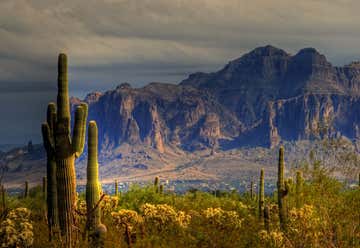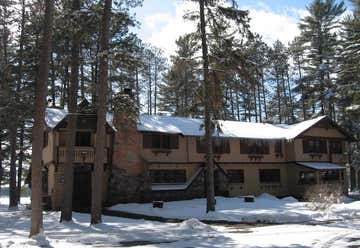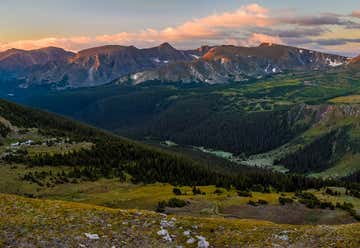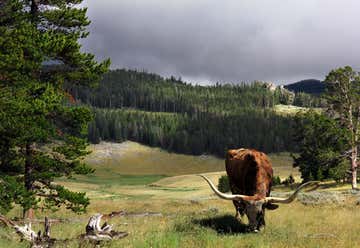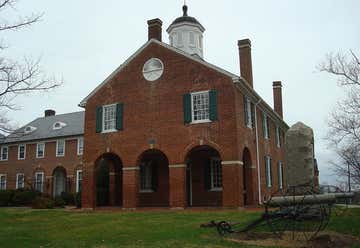Lost treasure has been the focus of countless books, myths, and movies for as long as we've been telling stories. History is full of tales about stashes of treasure left behind by pirates, scoundrels, and thieves, and lucky for us, some that fortune is still up for grabs. Here's your guide to the top 5 long-lost treasures still waiting to be discovered.
In Arizona's Lost Dutchman State Park, you'll find camping, hiking, horseback riding, and stargazing, but all of that seems a lot less exciting when you consider that one of the biggest stockpiles of treasure is hidden in the park's Superstition Mountains (seriously, what an appropriate name). The legend of the Lost Dutchman's Mine is one of the most infamous and widely disputed in America-- but the story of a gold mine, loaded with riches, hidden in the desert just won't seem to die out.
There isn't even solid evidence of the mine's actual existance, but that doesn't stop thousands of tourists from flocking to the mountains in Arizona each year, hoping to find the mythical mine and strike it rich. The story varies wildly-- sometimes there's two German immigrants (hence the name "Dutchman"), sometimes one, usually named Jacob Waltz. There's even a version where US Army veterans stumble across the treasure. Sometimes the mine is found randomly, other times the location is revealed by Apaches. Sometimes the treasure is a vein of pure gold, or the abandoned mine of the Peralta family, or a cache of goods stolen from Mexican miners. The only thing that seems to remain consistent is the location-- somewhere in the Superstition Mountains in Arizona.
With so many conflicting stories, the Lost Dutchman's Mine would have simply been forgotten, a legend lost to time, if it hadn't been for an expedition led by a man named Adolph Ruth, an amateur explorer and treasure hunter, in the early 1930's. He set off into the mountains in search of the mine, and half a year later, his remains were discovered, alongside a note, apparently written by him, claiming that he had found the treasure. The map he had that led him to the mine was missing, and there were two bullet holes in his skull, which looked like they were fired at point blank from a high-powered rifle, leading many to believe that he had been murdered. He's not the only one who has lost his life in search of the gold-- since then, about half a dozen or so others have died looking for the mine.
I don't suggest setting off in search for the mine without doing some very thorough preparation. Once you've brushed up on your orienteering and wilderness survival skills, head to the Superstition Mountain Museum to check out their exhibit on the Lost Dutchman's Mine and get a really extensive history on the various legends of the treasure. They also have the Peralta Stones, which they claim are engraved with cryptic clues that point toward the location of the mine.
In April 1934, one of America's most infamous gangsters managed to escape from the Little Bohemia Lodge in Mercer, Wisconsin before he could be captured by the FBI.
According to the legend, Dillinger escaped through the back door with a suitcase full of $200,000 in unmarked bills. He ran north a few yards and buried the suitcase where it remains to this day.
The Thomas Beale cipher is one of the most interesting real-life treasure quests. In 1816, Beale and his men discovered what would equal $63 million in gold, silver, and jewels hidden in the Rocky Mountains.
In order to insure their treasure would be passed down to their kin if they were to die before getting back to their homes, the men hid a majority of the treasure, but not before Beale created 3 ciphers. Once cracked, the first cipher would give away the location of the treasure, the second tells the contents, and the third names the next of kin.
Each cipher was given to Virginia innkeeper Robert Morriss. The instructions were as follows: If Beale didn't return in 10 years, a key would be delivered to Morriss to open the box containing the ciphers. Neither the key, nor Beale ever returned.
Many people have tried to crack the Beale cipher in order to retrieve the $63 million, but none have succeeded. Give it your best shot.
In the late 1800's the West was the place to be if you were looking to strike it rich. Today you're best off searching somewhere along the shores of the Bighorn River.
Captain Grant Marsh was on his way to deliver $375,000 to resupply General Custer's army when he heard of Custer's defeat. Knowing he would have to take the injured solders aboard the Far West, he and his men buried the gold for safe-keeping. Unfortunately when they returned to unearth the bars, there was nothing to be found.
According to the legend, Marsh attempted to retrieve the buried gold twice, and on his final trip a heavy rain caused a mud slide that hid the gold for good. Many still believe the gold is still buried along the Bighorn today.
There are reports that there is a cache of Civil War-era valuables worth upwards of $350,000 buried deep in the woods of Fairfax County, Virginia. It all started when Confederate Colonel (and notorious guerilla fighter) John Singleton Mosby launched a daring night raid one rainy night in early March of 1863. Mosby and his men captured 42 Union soldiers who were camping out at the Fairfax County Courthouse without firing a single shot. The Confederate army also, according to legend, found a burlap sack containing family heirlooms and treasures taken from the homes of Virginia's wealthiest planters in Brigadier General Edwin H. Stoughton's room. Jewelry, candlesticks, coins and more were reportedly among the booty that was on its way to Union authorities. Mosby and his men rounded up their captives, packed up the treasure and headed back towards Confederate lines.
On their way back, Mosby's Raiders ran into a little trouble; his scouts discovered that he and his men were about to walk right into a huge contingent of Union soldiers. Mosby, unsure of what was ahead and unwilling to let the valuables fall back into Union hands, took his most trusted sergeant and buried the treasure in the woods "between two pine trees", marking them with an X so he would be able to find it again. He had every intention of recovering the goods as soon as it was safe...but things didn't work out that way. He and his men arrived back to Culpepper, but it was a few months before Mosby felt it was safe enough to retrieve the goods. He sent his sergeant with six of his best men to go dig up the booty-- but before Mosby's men could reach the loot, they were captured by Union soldiers and hanged. Mosby was the only person left alive who knew where the treasure was buried. He was never able to return, however, and he took the location of some of Virginia's most precious heirlooms with him to his grave.

